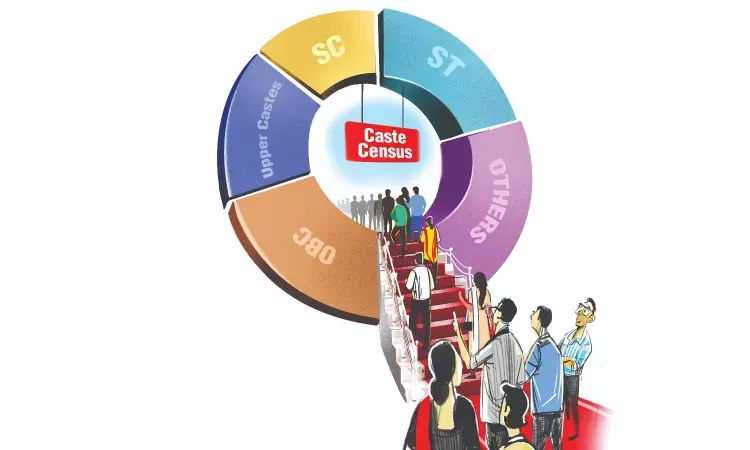Inevitability of caste census
Scheduled Castes (SCs) and Scheduled Tribes (STs), the fruits of affirmative action have been cornered by some social groups to the near exclusion of others.

Illustration: Saai
It is a long-proven fact that the benefits of any welfare policy, government intervention, new tech, or social opportunity always go to the more endowed sections first. So, it has been with India’s reservation policy on jobs and education. Particularly in respect of the Scheduled Castes (SCs) and Scheduled Tribes (STs), the fruits of affirmative action have been cornered by some social groups to the near exclusion of others.
The Gonds of Telangana, for instance, have been shut out of the 7.5% ST quota by the Lambadas who are more numerous and politically advantaged. In Andhra and Karnataka, the Madigas, although more numerous, have not benefited as much from the 15% SC quota as the Malas and Holeyas, respectively. It is welcome that the Supreme Court last week ruled in favour of sub-classification of castes within SCs and STs and greenlighted sub-quotas for them. The ruling by a seven-judge Constitution bench should lay to rest long-standing movements in several states for a fairer distribution of reservation benefits.
The 6-1 majority verdict lays down two important principles: It pins the onus of administering the sub-quotas on the states; and it recommends applying a creamy layer criterion to filter out economically better off individuals. Being closer to the ground, the states are better suited to assess socioeconomic backwardness, which tends to vary from state to state and region to region. Also, social groups suffering enduring disadvantages and needing this kind of intervention would find the state administration more accessible.
It is the creamy layer proviso that is more likely to be contentious and harder to implement. Analogous to the income filter currently applied to the Other Backward Class, which makes anyone whose parents earn more than Rs 8 lakh per annum ineligible for reservation, where will the creamy layer be for SCs and STs? Whatever the level at which it is applied, there is the possibility of sub-quotas going unfilled, prevalent even under the current regime. If so, where will the unclaimed SC/ST seats and jobs go? Will they accrue to the general category, as they do in the IIT/IIMs now, where they are likely to be bagged by Other Caste candidates? Then, there is the argument that for the SCs and STs the effects of social discrimination last generations and go much deeper than what a decent income can rid.
There is much fine print to be worked out but an important corollary cannot be denied any longer. To determine the sub-quotas and to allocate castes to sub-quotas, there needs to be a state-wise count of SC/ST populations and an assessment of their socioeconomic backwardness on multiple parameters. As the six assenting judges made clear, the sub-quotas must be administered on the basis of incontrovertible data rather than political expedient.
This makes a nationwide caste census inevitable. How fitting that this clarity has been revealed to the Centre in the same week that a ruling party MP, speaking in the Lok Sabha, used an accident of birth as a slur against the nation’s Leader of the Opposition? By mocking Rahul Gandhi as one “who does not know his own jati” Anurag Thakur showed us how deep caste prejudices run, and thus unwittingly underscored how necessary a caste census is to make policies that can attenuate such prejudices and the likes of him.



